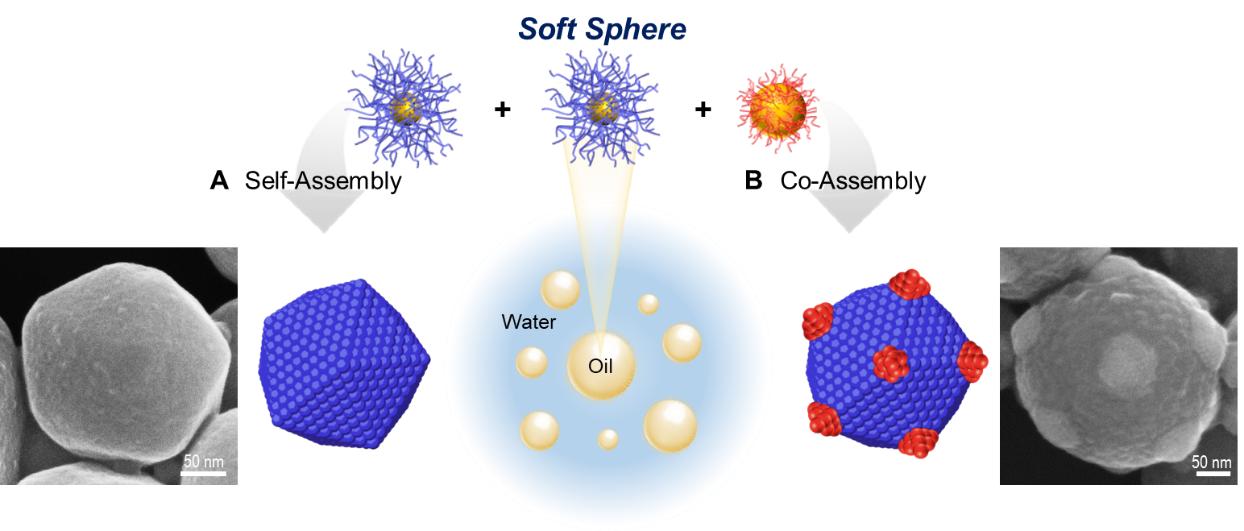KAIST
BREAKTHROUGHS
Research Webzine of the KAIST College of Engineering since 2014
Fall 2025 Vol. 25Emulsion technique: Sculpting soft sphere assembly into icosahedrons
Mackay icosahedrons—scientifically intriguing for their high symmetry and potential multifunctionality—were crafted beyond the typical structural limitations of soft spheres using an emulsion assembly technique.

Fivefold symmetry is an intriguing pattern observed across nature, from the petals of flowers to the starfish in the ocean. This unique symmetry is not only a visual wonder but also a structural phenomenon in the microscopic world of nanotechnology. Metals, alloys, and semiconductors often form into icosahedrons, structures resembling a soccer ball but with a twist of complex geometry. Owing to their high degree of symmetry and anisotropy, such shapes in crystals can exhibit extraordinary properties, such as enhanced heat and light absorption capabilities and unique electronic behaviors. However, creating these icosahedral shapes is challenging when working with soft spheres; nanoparticles are typically covered in flexible, soft polymer chains. Due to their softening effect, the soft spheres tend to settle into simple spherical forms, limiting their utility.

Addressing this obstacle, Professor Bumjoon J. Kim’s research team from the Department of Chemical and Biomolecular Engineering at KAIST has developed innovative evaporative emulsion techniques. Emulsions are mixtures of two liquids that do not usually blend, akin to oil and water, where one liquid is dispersed throughout the other in droplets. By confining the soft spheres within the tiny droplets, the team succeeded in shaping them into more complex forms, specifically into Mackay icosahedrons (Figure 1A). Moreover, when these structures are combined with other immiscible nanoparticles, the unevenness of icosahedrons can be used to place these new nanoparticles precisely at vertices, creating intricate hybrid patchy structures (Figure 1B). These structures display a range of surface properties and are ideal for innovative uses in nanotechnology.
This strategy adds a new dimension for assembling complex nanoscale structures with bespoke properties. The findings here are detailed in the paper entitled “Icosahedral Supracrystal Assembly from Polymer-Grafted Nanoparticles via the Interplay of Interfacial Energy and a Confinement Effect,” published in Science Advances on June 14th, 2024.
Most Popular

A New solution enabling soft growing robots to perform a variety of tasks in confined spaces
Read more
Development of a compact high-resolution spectrometer using a double-layer disordered metasurface
Read more
Towards a more reliable evaluation system than humans - BiGGen-Bench
Read more
AI-Designed carbon nanolattice: Feather-light, steel-strong
Read more
Dual‑Mode neuransistor for on‑chip liquid‑state computing
Read more